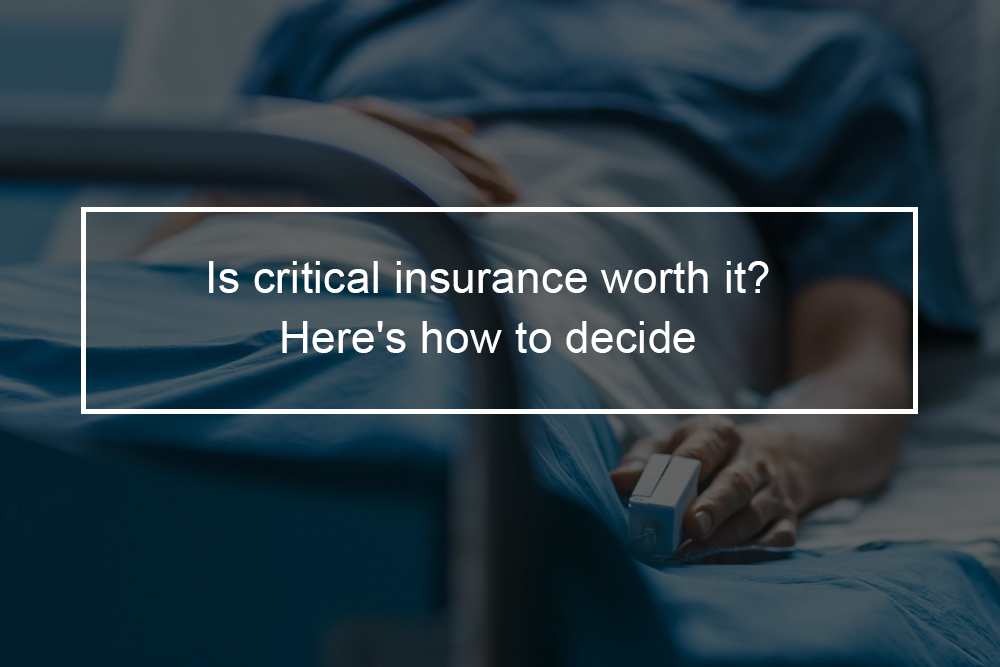
Most people presume that they are fully protected with a standard health insurance policy; however, excessive costs of treating life-threatening illnesses are often more than any policy will cover. Keep reading to learn more about critical illness insurance, and if it is a policy, you and your family will consider it.
What is critical illness insurance and how does it work?
As the standard life expectancy in the US keeps on increasing, insurance providers are finding ways to ensure Americans can afford the privilege of getting older. Critical illness insurance was established in 1996, as people realized that surviving a stroke or a heart attack could leave a patient with insurmountable medical bills.
Even with excellent medical plans, just one critical illness can be a tremendous financial burden. Critical illness insurance offers coverage if you experience one or more of the following medical emergencies:
- Coronary bypass
- Cancer
- Organ transplants
- Stroke
- Heart attack
Since these illnesses need comprehensive medical care treatment, their costs can quickly outstrip a family’s medical insurance policy. If you do not have a health savings account or emergency fund, you will have an even challenging time paying those bills out of pockets.
Most Americans are now choosing high-deductible health programs, which can be something of a double-edged sword: Clients benefit from comparatively affordable monthly premiums but could find themselves in a real pinch if a severe condition was to strike.
Critical illness insurance policy can pay for expenses not covered by traditional insurance. The funds can also be used for non-medical expenses related to the illness, including childcare, transportation, and more. Typically, the insured will get a lump sum of money to cover those costs.
Similar to any other health insurance policy, your coverage eligibility and the price of your premium are determined based on demographic information, including sex, age, family medical history, and current health-how. Some of these policies do promise to pay up to $100,000.
Given that they begin as low as $25 monthly, it might sound like a no brainer. After all, these bodies are known as dread diseases for a reason. Even with traditional insurance coverage, astronomical costs mean a significant illness can ruin a family financially. Medical costs are the main cause of bankruptcy filings in the United States.
With that said, it is worth noting that there are exceptions to critical insurance coverage. Some cancer types are not covered, while chronic illnesses are also often exempted. You may not be able to get a payout if an illness comes back or if you suffer a second heart attack or stroke. Some coverage may end after the insured reaches a certain age. So, like any insurance, ensure to read the policy carefully. The last thing you want to be concerned about is an emergency program.
Is the critical insurance worth it?
You can buy illness insurance on your own or via your employer (many provide it as a voluntary benefit). Adding the plan to a current life insurance plan may also save you money.
One of the reasons organizations have been keen to include these plans is that they recognize employees are worried about high out-of-pocket costs with a high-deductible program. Unlike other health care benefits, employees generally bear the whole cost of critical illness programs. That makes it a money saver for the organization, as well as employees.
A great draw of critical illness insurance is that the money can be utilized for various activities like:
- Terminally ill patients, or those in need of restful places to recuperate, can utilize the money to take a vacation with family or friends.
- Transportation costs include getting to and from treating centers, installing lifts in homes for critically ill patients who can not navigate staircases, and retrofitting vehicles to carry wheelchairs and scooters
- To pay for daily living expenses, allowing the critically ill to center their time and energy on getting well rather than working to pay their bills.
- To pay for medications not covered by a traditional policy.
- To pay for critical medical services that may otherwise be unavailable.
Low cost, limited coverage on critical illness insurance
Part of what makes these plans appealing is that they basically do not cost a lot, particularly when you get them via an employer. Some smaller policies run as little as $25 monthly, which looks like a bargain as opposed to the cost of a typical health insurance plan.
Despite the plans’ low price and enticing benefits, critical illness coverage only covers a very select few illnesses. Besides, the way those diseases are described in the fine print can mean you have trouble getting your benefits even though you are diagnosed. Benefits are only paid out if your disease meets specific coverage circumstances. For example, your cancer diagnosis might not be enough to trigger payment if it has not spread or is not yet considered life-threatening.
What is more, the particular illnesses these plans cover might be the scariest and best-known; however, that does not mean you will likely get them. People often overestimate their risk of getting cancer at any one time compared to getting many other conditions less frightening but also very costly. What is more, these plans’ premiums increase as you age, just like traditional insurance – and might even reduce or drop your benefits after you reach a specific age.
If these plans tempt you, they may work for you- if you take the time to understand them fully. Ensure you are an educated consumer and read the fine print. Consumers have gotten used to clicking yes on terms and conditions, but when it comes to this type of insurance, it is vital to read the fine print- and if you do not have the time or disposition to do that, the coverage might not be for you.
Are there alternatives to critical illness insurance?
Insiders point out there are alternative kinds of coverage without all these restrictions to ensure a critical future illness does not render you bankrupt. For example, disability insurance offers income when you cannot work for medical reasons, and financial protection is not limited to a narrow set of illnesses. This is a particularly good option for anyone whose livelihood would take a significant hit from a prolonged work absence.
You can also consider bulking up your traditional health insurance policy. Even though more comprehensive coverage might lead to higher premium today, it can also mean lower out-of-pocket maximums down the line.
You can also make excessive use of a health savings account, or HSA, which provides tax benefits and enables you to use the money for various qualified medical expenses at your own pace. Nonetheless, you will need to be enrolled in a high-deductible health program, or HDHP, to qualify.
You can also develop a separate savings account to cover non-medical outlays that can arise if you have cancer, for instance, and have taken leave from your job.
Since medical and health bills are a common cause of bankruptcy in the US, protecting yourself against that fate should be given consideration, particularly if you have a family record of any critical illnesses discussed above. Critical illness insurance can ease financial worry in the case money paid out can be utilized as you wish, to cover various potential needs.
There are stipulations and drawbacks to this kind of insurance coverage, though. As with all kinds of insurance, you should shop around to get the policy that best meets your needs and situation.










